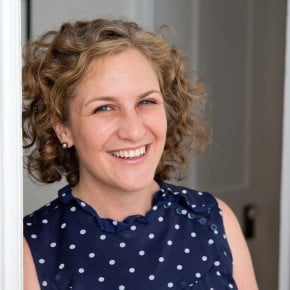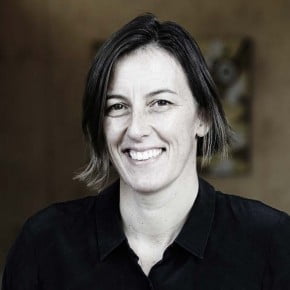The NSW Gender Equity Taskforce (GET) is making a difference (and you can too!). Lee Hillam chats with the chair of the NSW GET, Callantha Brigham, on its progress to date.
- Callantha Brigham
- Lee Hillam
Since 2014 I have been part of the National Committee for Gender Equity (NCGE), which came into being in response to the Australian Institute of Architects’ Gender Equity policy. I have been encouraged to see the momentum build through Parlour, the NSW Chapter’s Gender Equity Taskforce (GET) and multiple grassroots groups.
One of the commitments within the NCGE is to find ways to connect all these activities so that each group aiming to make an impact in the gender equity debate has the support of those who have come before. With that in mind I asked Callantha Brigham, the chair of the NSW GET, to share what they’ve learnt so far.
LH: The NSW Gender Equity Taskforce has been in existence now for around three years. How did it come about? Was there a moment or an event that provided the catalyst for the group’s formation?
CB: For me personally there were two catalyst moments and both came out of my involvement with the editorial committee of Architecture Bulletin (AB). The first was an issue of AB titled ‘Human Capital, not just a gender issue’, curated in 2012 with Joe Agius as the editor-in-chief. Compiling the issue generated a lot of debate among the guest editorial committee (Diane Jones, Caroline Pidcock, Sandra Kaji O’Grady, Tarsha Finney). My husband and I were working part time and struggling to keep our careers afloat, and I guess I entered that debate wondering whether the problem was with me. By the time that issue was published it had become apparent that we should be having a much bigger and broader discussion about these issues.
The second moment occurred a year or so later when Shaun Carter replaced Joe as editor of AB. Shaun and I didn’t know each other at the time, but in that first conversation Shaun told me he thought gender equity was the issue of our time and we really should be expanding our coverage of the subject in some way. We felt that we should actively seek to do something, to take action. The idea of a taskforce was born.
LH: How did you go about selecting members for the group?
CB: The discussion about potential taskforce members started in a conversation I had with Joe, and then continued to evolve with Shaun. The three of us came from very different types of architectural practice (large, small, government), so it was obvious to us that we should consider a diverse mix of people. It was also important that the group could work together. Most of the people Shaun and I asked to get involved came from our personal networks, but there was also some loose criteria. We felt we needed men and women, a research/academic perspective, and representation across a number of types of practice. That was about three years ago and the current group still consists of most of its original members (Shaun Carter, Monica Edwards, Tarsha Finney, Maryam Gusheh, Natalie Lane-Rose, David Tickle), though both you and Josephine Hurley have joined us this year.
LH: What is the relationship between the GET and the NSW Chapter of the Institute of Architects? How are you supported by the institute?
CB: There is a very strong relationship between GET and the NSW Chapter of the Institute of Architects, though this may not be visible from our meetings (which are not held at the Chapter). It’s not surprising that the former NSW president Joe Agius is a current Champion of Change and the current NSW Chapter president Shaun Carter is a GET member. A number of us are also involved in other Institute activities – Monica Edwards and I are on the NSW Chapter Council and David Tickle is on the editorial committee for the Architecture Bulletin. We also have good support from the Chapter staff: the current Chapter manager, Audrey Braun, attends GET meetings; Monica Love manages the Champions of Change program; and event support is provided by Hannah Burgess. We are otherwise self-funded and financial support has come from fundraising, fee paid programs, and sponsorship.
LH: What do you see as your most important achievements to date and what have you learnt along the way about how to effect change?
CB: Important achievements were: forming and building momentum within GET; beginning the Champions of Change program; and generally raising the profile of this issue in NSW. We achieved this through various Architecture Bulletin articles, the Champion of Change launch event and this year’s International Women’s Day breakfast with Justine Clark (last year’s Marion Mahoney Griffin prize winner). The practices that are involved in the pilot program (Architectus, Bates Smart, BVN, Crone, Cox, Hassell, PTW, SJB Architects, Woods Bagot) are all large, leading firms, and we are confident that together they will individually and collectively make a difference to the culture of their practices and the profession at large.
Gender equity is a complex issue. It’s easy to get lost in how big the task is. GET spent its first year swimming around in this, talking to people outside the profession about what others had done, what worked and what didn’t work, and figuring out what could realistically be achieved by an unfunded group working within the framework of the Institute. What helped was having clear objectives, a strong sense that we should focus on activities with the potential for the biggest impact, and the knowledge that we could be most effective by positioning ourselves in the gap between research, policy and practice.
LH: The NCGE would love to see each Chapter have their own GET and will be working to support this. What advice would you give to others interested in starting a GET in their own state or territory?
CB: Probably the key piece of advice I would give is to find people committed to the issue who you think will work well together, be clear about what you are trying to achieve, focus on your group’s strengths and what the local Chapter already does that you might be able to leverage from. The NSW GET team is a highly capable group with strong networks within the Institute and across the industry. This has made it easier for us to get advice, talk to and collaborate with others. We meet on a monthly basis, all meetings are minuted and it really helps that the group is diverse – differences of opinion are a regular occurrence and make our decision-making process more rigorous. Not everyone comes to every meeting but everyone is committed and can be counted on to provide advice between meetings. We work best when we focus on one or two things at a time and centre the group energy on these. As none of us are gender experts, our tactic has mainly been to approach this issue with an open mind and look to learn from, emulate and wherever possible engage with others.
Architecture is not the only profession with this problem and we are not alone in trying to solve it. There are lots of initiatives out there we can adapt to our profession. Gender equity is an issue that requires system level change and we need to encourage as many people as possible to engage in this space. NSW GET is a work in progress and there is a long way to go but we look forward to continuing to build momentum, working with the NCGE and hopefully GET groups in other states soon.
So, if you are interested in forming a GET for your chapter, get in touch with Daniela Crawley at the AIA and she’ll be able to point you towards the NCGE representative in your state. Or perhaps you already meet with a group regularly and would like to take on the mantle of being an institute GET? Remember, visibility of our activities and of the topic in general is an important part of the journey towards equity. Let’s GET on with it!
Lee Hillam is the Chair of the National Committee for Gender Equity (NCGE) and a director of Sydney-based Dunn & Hillam Architects. She has taught at the University of NSW and the University of Sydney in the School of Architecture.
Callantha Brigham is an architect currently working for City of Parramatta Council. She is Chair of the NSW Gender Equity Taskforce and a NSW Chapter Councillor.






















